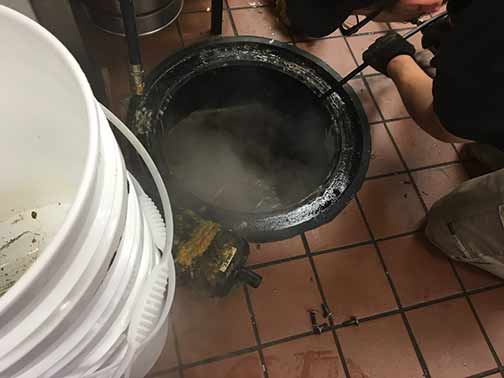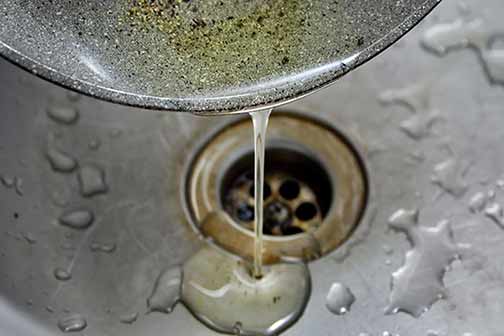
Before you can optimize your restaurant’s plumbing system, it is essential to thoroughly assess the current state of your plumbing infrastructure. This involves a detailed inspection of all the pipes, fixtures, and appliances to identify any existing issues or potential problem areas. Consider hiring a professional restaurant or commercial plumber to conduct this assessment, as they have the expertise to spot issues that may not be immediately obvious.
During the assessment, take note of any leaks, corrosion, or blockages in the pipes. Check the condition of the water heaters, dishwashers, and other appliances that rely on the plumbing system. Additionally, evaluate the water pressure and flow rates to ensure they meet the needs of your restaurant. Documenting the findings from this assessment will provide a baseline for future improvements and help prioritize areas that require immediate attention.
Moreover, understanding the current state of your plumbing system will allow you to make informed decisions about necessary upgrades and repairs. This proactive approach can prevent minor issues from escalating into major problems that could disrupt your restaurant’s operations and lead to costly repairs. By taking the time to thoroughly assess your plumbing system, you can ensure that it is functioning efficiently and effectively, providing a solid foundation for your restaurant’s success.
Implementing Regular Maintenance Checks to Prevent Plumbing Issues
Regular maintenance checks are crucial to keeping your restaurant’s plumbing system in optimal condition. Establish a routine maintenance schedule that includes inspecting pipes, fixtures, and appliances for signs of wear and tear. Regularly clean and descale faucets, showerheads, and other water outlets to prevent the buildup of mineral deposits that can reduce water flow and pressure.
Ensure that grease traps and interceptors are cleaned and maintained regularly to prevent clogs and backups in the drainage system. Schedule periodic camera inspections of the sewer lines to detect and address any blockages or damage early on. By proactively addressing minor issues through regular maintenance, you can prevent major plumbing problems that could disrupt your restaurant’s operations and lead to costly repairs.
In addition to routine camera inspections, it is important to keep detailed records of all maintenance activities. This documentation can help you track the condition of your plumbing system over time and identify recurring issues that may require more comprehensive solutions. By staying on top of regular maintenance, you can extend the lifespan of your plumbing system and ensure that it continues to operate efficiently, reducing the risk of unexpected breakdowns and costly repairs.
Upgrading to High-Efficiency Fixtures for Water and Cost Savings
One of the most effective ways to optimize your restaurant’s plumbing system is by upgrading to high-efficiency fixtures. These fixtures are designed to use less water while maintaining or even improving performance. Consider replacing old faucets, toilets, and urinals with low-flow models that reduce water consumption without compromising functionality.
Install aerators on faucets to reduce water flow while maintaining adequate pressure for washing and cleaning tasks. Upgrade to high-efficiency dishwashers and pre-rinse spray valves that use less water and energy. Investing in these upgrades not only helps conserve water but also reduces utility bills, contributing to long-term cost savings for your restaurant.
Furthermore, high-efficiency fixtures can enhance the overall sustainability of your restaurant by reducing your environmental footprint. By using less water and energy, you can minimize your impact on natural resources and contribute to a more sustainable future. Upgrading to high-efficiency fixtures is a smart investment that can pay off in both financial and environmental benefits, helping your restaurant operate more efficiently and responsibly.
Training Staff on Proper Usage of Plumbing Fixtures and Systems
Proper usage of the plumbing system by your staff is essential to maintaining its efficiency and longevity. Provide training to your employees on best practices for using sinks, dishwashers, and other plumbing fixtures. Emphasize the importance of conserving water and avoiding practices that can lead to clogs or damage, such as disposing of grease down the drain.
Encourage staff to report any leaks or plumbing issues immediately so they can be addressed promptly. Implementing a culture of awareness and responsibility among your team can significantly reduce the risk of plumbing problems and ensure that the system operates smoothly and efficiently.
Additionally, consider creating written guidelines and procedures for staff to follow when using plumbing fixtures and systems. This can serve as a reference for new employees and help reinforce proper practices among existing staff. By providing comprehensive training and clear guidelines, you can empower your team to take an active role in maintaining the health of your plumbing system, ultimately contributing to the overall success of your restaurant.

Monitoring and Managing Water Usage to Optimize Efficiency
Monitoring and managing water usage is a key strategy for optimizing your restaurant’s plumbing system. Install water meters and sub-meters to track water consumption in different areas of the restaurant. This data can help identify patterns of excessive water use and pinpoint areas where conservation efforts can be focused.
Implement water-saving practices such as using timers for irrigation systems, fixing leaks promptly, and optimizing dishwasher cycles. Regularly review water bills to detect any unusual spikes in usage that may indicate hidden leaks or inefficiencies. By actively managing water usage, you can reduce waste, lower utility costs, and ensure the sustainability of your restaurant’s operations.
Moreover, consider investing in smart water management systems that provide real-time data and analytics on water usage. These systems can help you identify trends and make data-driven decisions to optimize water efficiency. By leveraging technology to monitor and manage water usage, you can achieve greater control over your plumbing system and drive continuous improvements in efficiency and sustainability.
Planning for Emergencies and Repairs to Minimize Disruptions
No matter how well-maintained your plumbing system is, emergencies and unexpected repairs can still occur. Having a plan in place for handling these situations is essential to minimize disruption to your restaurant’s operations. Establish a relationship with a reliable restaurant plumbing service that offers emergency support and can respond quickly to urgent issues.
Keep a well-stocked inventory of essential plumbing supplies and tools on hand to address minor repairs in-house. Train staff on basic troubleshooting and emergency response procedures, such as shutting off the water supply in case of a major leak. By being prepared for plumbing emergencies such as burst pipes, you can quickly resolve issues and maintain the smooth operation of your restaurant.
Additionally, consider developing a comprehensive emergency response plan that outlines specific steps to take in various scenarios, such as major leaks, sewer backups, or equipment failures. This plan should include contact information for key personnel and service providers, as well as instructions for communicating with customers and staff during emergencies. By having a well-defined plan in place, you can ensure that your restaurant is prepared to handle any plumbing-related challenges that may arise, minimizing disruptions and maintaining a high level of service.
Conclusion: Achieving Long-Term Success Through Plumbing Optimization
Optimizing your restaurant’s plumbing system requires a comprehensive approach that includes assessing the current infrastructure, implementing regular maintenance checks, upgrading to high-efficiency fixtures, training staff, monitoring water usage, and planning for emergencies. By following these strategies, you can achieve better performance, reduce maintenance costs, and ensure the long-term sustainability of your restaurant’s plumbing system. Investing in the health of your plumbing infrastructure not only enhances the efficiency of your operations but also contributes to a positive dining experience for your customers.
Ultimately, a well-optimized plumbing system is a key component of a successful and sustainable restaurant. By taking proactive steps to assess, maintain, and improve your plumbing infrastructure, you can create a solid foundation for your restaurant’s growth and success. Whether you are a new restaurant owner or an experienced operator, prioritizing the health of your plumbing system is a smart investment that can yield significant benefits for your business and your customers.

